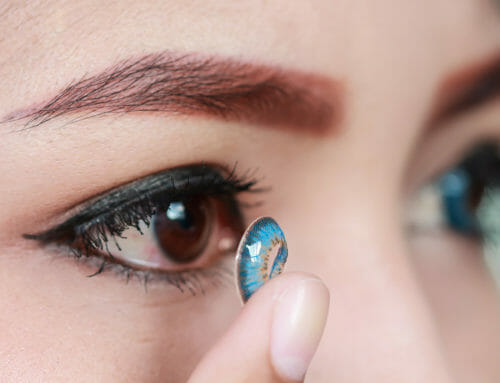
What Is Heterochromia?
Heterochromia is a condition where the coloured part of the eye (iris) are different colours. There are 3 different types of heterochromia eyes.
1. Complete Heterochromia Eyes
This is where each of a person’s eyes is a completely different colour; one eye may be blue and the other brown, for example.
2. Central Heterochromia Eyes
A person who has two different colours on the same iris. The inner ring of the iris is a different colour to the outer ring of the iris. It is believed that the outer coloured ring is the ‘true’ iris colour in people with this type of heterochromia.
3. Sectoral Heterochromia Eyes
Also called partial heterochromia, this is where one section of the iris is a different colour from the rest of the iris. This often presents itself as an irregular spot, rather than a ring, on the iris in one colour while the colour around this spot is different.
For most, heterochromia is present from birth. This is known as genetic heterochromia. Many cases are sporadic with no family history of the condition. A lot of research has been carried out on this condition, and it is suggested, more often than not, that the condition in humans is benign without any underlying problems. However, some cases of genetic heterochromia link to diseases and syndromes such as; Bourneville disease, Waardenburg syndrome, and Horner’s syndrome, to name a few. Heterochromia can also develop later in life, as acquired heterochromia. Whilst less common than genetic heterochromia, some causes of acquired heterochromia are; diabetes, glaucoma, eye injury, eye surgery, and some medications.
As mentioned above, most cases are benign, but people who are either born with the condition or acquire it later in life should see an eye doctor to rule out any underlying problems. As long as there are no underlying problems, treatment is not usually required, but some people choose to wear coloured contact lenses to alter the colour of their eyes.
Here are some celebrities who have heterochromia;
- Christopher Walken (actor), central heterochromia
- Idina Menzel (actress), central heterochromia
- Max Scherzer (professional baseball player), complete heterochromia
- Mila Kunis (actress), complete heterochromia
- Kate Bosworth (actress & model), sectoral heterochromia
- Henry Cavill (actor), sectoral heterochomia

About the expert
Mr Hamada | Consultant Ophthalmologist and Corneal Surgeon
MD, MSc, DO (hons), FRCSEd, FRCOphth I am Samer, founder and consultant ophthalmic surgeon with over 20 years’ experience in ophthalmology. I am a world-renowned specialist in cornea, cataract and refractive surgery. I’m not only a leading surgeon but also the only dual fellowship trained in corneal diseases in children from reputable institutions in the UK. At Eye Clinic London I work closely with other consultant ophthalmologists, optometrists and orthoptists to achieve the best outcomes for our patients. Our main aim is to make sure our patients get the safest and best treatments available to them. We put your safety before anything else so you can rest assured that if you choose us you will be in the best and safest hands.



